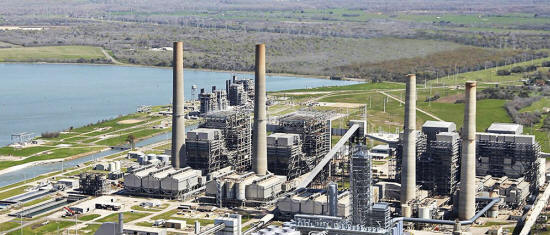|
from
Futurism Website
The Petra Nova system at the W.A. Parish Generating Station in Texas will be the largest coal power plant in the world when it fires up next year, according to a report from Scientific American.
It is expected to capture 90% of the carbon dioxide from its exhaust gases. This is a breath of fresh air for an industry so admonished and blamed for the rising global greenhouse gas emissions.
Petra Nova isn't the first company to work toward cleaner ways of utilizing coal. Notably, the Kemper County Energy Facility project in Mississippi, once destined to "save the industry," is now a disappointing billion dollars over budget and years overdue.
What's different W.A. Parish is that, instead of putting forth experimental technology, they used long-established techniques that were revamped for the huge application.
To boot, Petra Nova is wheeling out their cleaner technology on schedule and within budget.
They do it through a method called scrubbing - a way of "washing" the exhaust gas in a way that the carbon dioxide transfers to solvents and the particulate matter is sieved out.
This way, it keeps the carbon dioxide from being released into the atmosphere, a vital mitigation to global warming and climate change.
Energy Efficiency
Carbon capture approaches are imperative to how we harness energy, while reducing the negative impact on the Earth.
These also mitigate meeting emission goals, such as those demanded by the Paris climate accord.
Scientific American reports that the captured carbon dioxide will be pumped out to fields in Jackson County, Texas, where it will be used to recover oil from depleted wells.
Drillers estimate that the field holds 60 million barrels that could be recovered.
The gas isn't just kept from harming the atmosphere, it will be used to tap into more energy sources.
...to
Open Soon
from
ScientificAmerican Website
The Petra Nova carbon capture system is under construction at the W.A. Parish Generating Station, a coal-fired power plant southwest of Houston (pictured above).
Credit: ROY LUCK
Flickr CC BY 2.0
emitted by a huge coal power plant, but use it to pump oil
out of the ground
The billion-dollar facility will become
the largest post-combustion carbon capture system installed on an
existing power plant in the world.
NRG Energy and
JX Nippon Oil & Gas Exploration Corp.,
Japan's largest oil producer, are running the Petra Nova project as
a 50-50 joint venture under the umbrella of Petra Nova Parish
Holdings LLC.
NRG also received $167 million from the
U.S. Department of Energy's Clean Coal Power Initiative, plus
another $23 million from DOE under Section 313 of the Consolidated
Appropriations Act of 2016 for the carbon capture system.
That means they don't have a captive base of ratepayers, so if the price of power jumps too high, their customers have the option of going elsewhere.
An example of
widespread CCS?
Drillers estimate that the field holds
60 million barrels that could be recovered with EOR.
This progress stands in stark contrast to the Kemper County Energy Facility in Mississippi, another high-profile carbon capture project that received DOE funding.
Kemper has fallen years behind schedule
and has gone billions over budget, with costs rising to $6.8
billion, more than three times the original estimate (EnergyWire,
July 28).
While Petra Nova will capture carbon dioxide after the combustion process, the 582 MW Kemper plant turns lignite coal into gas and separates out the carbon dioxide before the fuel is burned.
The captured carbon dioxide at Kemper will also be used for EOR.
Between the two projects, Petra Nova may be the one that has the more important lesson for coal power in the United States, since it's a retrofit.
He noted that Petra Nova's current scale is larger than the initial proposal, a change made to improve the economics of the facility.
Petra Nova may still face headwinds, since the low price of oil may persist and eat into demand for EOR.
But project managers are still carrying on in hopes of meeting their deadline.
|




